Breastfeeding, Babywearing & Bouncing Back into Shape after Baby
[By L.R.Knost, author of Two Thousand Kisses a Day: Gentle Parenting Through the Ages and Stages, Whispers Through Time: Communication Through the Ages and Stages of Childhood, and The Gentle Parent: Positive, Practical, Effective Discipline available on Amazon and through other major retailers.]
~~~~~~~~~~~~~~~~~~~~~
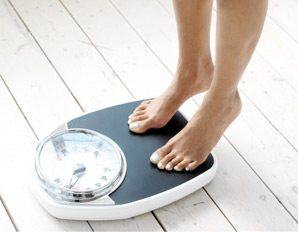 There is no such thing as a ‘miracle’ weight-loss plan, but living a healthy, active life and eating nutritious meals doesn’t have to be all about sweat, sacrifice, and self-discipline, either. It can be about having fun, eating foods you love, and, best of all, it can fit right in with your lifestyle! By following a few basic nutritional guidelines and finding ways to fit exercise into your daily life, you can create your own ‘life plan’ and start moving toward your weight-loss and health goals.
There is no such thing as a ‘miracle’ weight-loss plan, but living a healthy, active life and eating nutritious meals doesn’t have to be all about sweat, sacrifice, and self-discipline, either. It can be about having fun, eating foods you love, and, best of all, it can fit right in with your lifestyle! By following a few basic nutritional guidelines and finding ways to fit exercise into your daily life, you can create your own ‘life plan’ and start moving toward your weight-loss and health goals.
1.) Practice the 3 B’s
Breastfeeding~Did you know that one of the best ways to lose weight after giving birth is to breastfeed? Breastfeeding uses about 300-500 of the calories you eat each day. That means if you eat the full amount of daily recommended calories for your weight, you’re actually dieting! I don’t recommend calorie-counting as a means of weight loss, but that’s a pretty cool fact, anyway! And when you add the fact that breastfeeding significantly reduces your risk of breast cancer and is super healthy for baby…win-win-win!
Babywearing ~Did you know that in addition to all of the amazing benefits to your baby, babywearing also offers you an excellent opportunity for a daily workout? Wearing your baby works your core and glutes specifically and gives you a full body workout, as well! Who needs a gym when housecleaning, walks on the beach, strolls through the mall, and just daily life in general are an excellent workout, all while keeping baby next to your heart and close enough for kisses?!?
Bouncing~Did you know that kegels can actually do more harm than good? Shallow knee bends like the ones mommies use instinctively when they bounce to soothe a fussy baby are the preferred method of improving the pelvic girdle! So say goodbye to the sneezing/laughing ‘leakies’ and hello to buns and thighs of steel!
2.) Healthy Eating, It Does a Body Good
Did you know that a low fat diet can actually make you fat? A diet of full-fat milk, real butter, real cane sugar, extra virgin olive oil, coconut oil, fat-marbled meat, eggs, nuts of all kinds, cheeses, fruits, veggies, and whole grain pastas and breads is far more likely to help you lose weight and maintain a healthy weight for life.
Along with enjoying these yummy foods, you’ll lose weight faster and be overall healthier by avoiding High Fructose Corn Syrup (HFCS – it’s in practically everything…breads, juices, jellies, etc…so you’ll have to read labels carefully!) and other corn-derived syrups and sugars, along with food dyes, margarine, vegetable/canola/safflower oils, and artificial sweeteners.
If you’ve got a sweet-tooth, denying yourself a treat can lead to overeating as you try to satisfy that urge with other foods. One way to combat that is to indulge in a small amount of ice cream (without HFCS or other corn syrups!) or dark chocolate, preferably in the evening because raising your blood sugar earlier in the day tends to increase your appetite for the rest of the day.
Keep in mind, letting yourself become hungry is one of the surest paths to overeating! It’s far better to eat multiple, small, snack-type meals throughout the day than to wait for meals when you’ll be hungrier and more likely to eat too much. Other benefits to ‘snacking’ instead of eating three full-on meals are 1.) Maintaining a consistent blood sugar, which aids in appetite control and helps your body escape the ‘survival’ instinct to store fat; 2.) Reducing your appetite naturally by eating smaller amounts at a time which helps your stomach to shrink; and 3.) Increasing your metabolism by consistently keeping your digestive system heated up in ‘burn mode.’
Sample meal plan:
1st Breakfast~
¼ cup almonds & ¼ cup raisins
2nd Breakfast~
1 whole egg (Yes, eat the yolk, too! That’s where most of the healthy nutrients are.)
1 Whole wheat English muffin with real butter and ¼ cup natural fruit preserves
8 oz. cottage cheese
Elevensees~
½ cup pretzels & 2 oz. whole-fat cheese
Lunch~
Spinach salad with ¼ cup shredded carrots, ¼ cup dried apricots or cranberries, 2 oz. whole-fat shredded cheese, 4 oz. shredded pork, 2 tbs. minced almonds or sunflower seeds , and 2-4 tbs. Balsamic Vinaigrette (Read the label and watch out for HFCS!)
Tea~
8 oz. yogurt & ¼ cup granola & ¼ cup berries
Supper~
Fettucini Alfredo, Meatball Sub, Pizza, whatever you want! Just fill up your plate as you normally would, then put back half. After you eat, wait 20 minutes and, if you’re still hungry, eat ¼ of what you put back. (Supper is where most people ‘fail’ because that’s the time most social eating occurs. Rather than denying yourself and setting yourself up for failure, this plan allows you to enjoy the foods and social life you’re accustomed to, while still cutting out ¼ to ½ of the calories you’d normally eat at this meal.)
Dessert~
For those with a sweet tooth, after supper is the best time for a few ounces of dark chocolate or ice cream! Pastries and cakes aren’t good choices for a treat, but if you indulge occasionally, no worries 🙂
Bedtime snack~
¼ cup almonds & ¼ cup dried pomegranates or cranberries
You can take this sample plan and switch out items from the same food group so it fits your tastes. For instance, if you don’t like salads, you could switch out the lunch salad with a baked whole grain pork burrito and top it with lettuce, tomato, cheese, etc. Just try to make sure that for every protein/fruit/veggie/dairy you take out, you put the same amount back in. (Sorry about The Hobbit reference. I couldn’t resist!)
3.) A Grateful Heart is a Healthy Heart
Science has proven that a good outlook on life improves not only the quality of a person’s life, but also the length and health aspects of their life. Taking time to intentionally focus on the good things in your life will improve your health, satisfaction, and overall happiness. Here are some ideas:
A.) Get outdoors! Heading out into the sunshine has been shown to improve a person’s mood as well as their health. There’s something about standing in the midst of towering trees or watching butterflies flutter by in the garden that makes stress just melt away. (And a daily dose of sunshine-induced Vitamin D is good for your bones!)
B.) Walka-Walka-Walka! Walking improves circulation and deepens breathing, both of which will make you feel more alive and ready to take on the world!
C.) Count your blessings! Taking time each day to list and be thankful for the good things in your life helps to create balance, making life feel more manageable when it begins to feel overwhelming.
D.) Volunteer! Reaching out to help your fellow humans in need is a great way to make your life feel a lot more purposeful and to help you get a healthy perspective on the stresses in your life.
E.) Laugh out loud! We all type that little ‘lol’ all the time when we’re online, but did you know that actually doing it, really and truly laughing out loud, releases stress-relieving, feel-good endorphins in our bodies? So watch a comedy routine, catch a funny old sit-com rerun, or just sit and enjoy a child playing for ten minutes, and you’ll be sure to laugh away the blues!
*Obligatory disclaimer: I am not a doctor, nor do I play one on TV. This is a guide (not a diet) that I created to return to my pre-pregnancy (Well, pre-pregnancies, actually, since I have six children!) shape and weight in a healthy and swift fashion and that I continue to follow for weight maintenance and healthy nutrition. This guideline is not designed for special health needs. Be sure to check with your doctor or other health professional if you have any health concerns.
Related posts:
Babywearing Basics Resource Guide
10 Ways to Play with your Children when Play is the Last Thing on your Mind
Parenting, Trickery & The Great Obesity Lie
June 24, 2012 | Categories: attachment parenting, baby led weaning, babywearing, birth, breastfeeding, cosleeping, food, motherhood, natural parenting, newborn, nursing, pregnancy, soothing, toddler, Uncategorized | Tags: attachment parenting, babywearing, breastfeeding, exercise, health, healthy eating, natural parenting, newborn, nursing, nutrition, parenting, pregnancy, toddlers | 7 Comments »  Award-winnning author, L.R.Knost, is the founder and director of the children's rights advocacy and family consulting group, Little Hearts/Gentle Parenting Resources, and Editor-in-Chief of Holistic Parenting Magazine. Books by L.R.Knost include Whispers Through Time: Communication Through the Ages and Stages of Childhood ; Two Thousand Kisses a Day: Gentle Parenting Through the Ages and Stages ; The Gentle Parent: Positive, Practical, Effective Discipline ; and Jesus, the Gentle Parent: Gentle Christian Parenting the first four books in the Little Hearts Handbook gentle parenting series, and children’s picture books Petey’s Listening Ears and the soon-to-be-released Grumpykins series.
Award-winnning author, L.R.Knost, is the founder and director of the children's rights advocacy and family consulting group, Little Hearts/Gentle Parenting Resources, and Editor-in-Chief of Holistic Parenting Magazine. Books by L.R.Knost include Whispers Through Time: Communication Through the Ages and Stages of Childhood ; Two Thousand Kisses a Day: Gentle Parenting Through the Ages and Stages ; The Gentle Parent: Positive, Practical, Effective Discipline ; and Jesus, the Gentle Parent: Gentle Christian Parenting the first four books in the Little Hearts Handbook gentle parenting series, and children’s picture books Petey’s Listening Ears and the soon-to-be-released Grumpykins series.
Play~Bubbles and Babies and Butterflies
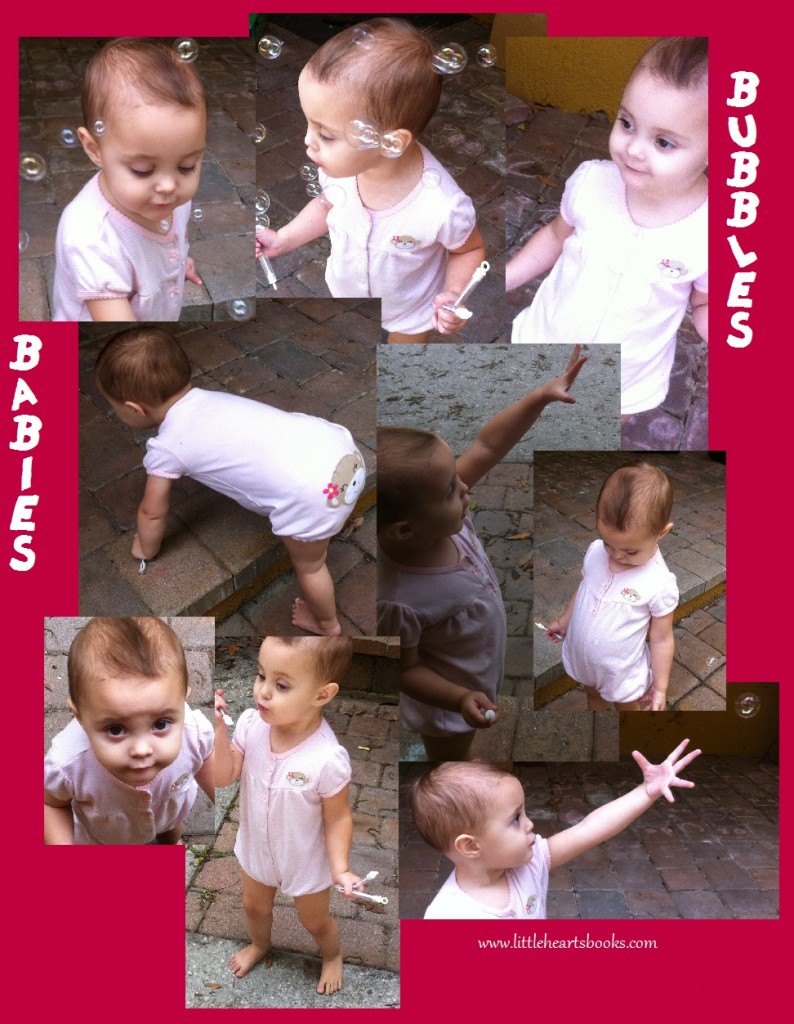 Sunshiny days fly on butterfly wings
Sunshiny days fly on butterfly wings
Filled with wading pools, sidewalk chalk, springy-time things
Bubbles and babies and bear-bottomed rompers
Mudpies and magpies and jump-rope trick jumpers
Swinging and sliding and climbing and running
Learning, discovering, growing, becoming
No time to waste they are seizing the day
The work of a child is simply to play

Related posts:
On a Winnie the Pooh style ‘long explore’ my little Pooh Bear discovered the world in The Many Adventures of My Little Pooh Bear
Children who love to read…READ! Engaging children’s hearts in the wonder of reading instead of just training their minds in its mechanics. Raising Bookworms
Think homeschooled children are unsocialized, over-controlled, locked-away-from-the-world misfits? Think again! My Renaissance Girl
In the world of a child wonders are as simple as sticks and sheets, leaves and books, boxes and giggles, and the promise in a rainy day. The Seven Wonders of the World of Childhood
There is such a rush these days to get children sleeping through the night, weaned off the breast, eating solid foods, potty trained, reading independently, and on and on, that we seem to have lost the ability to simply enjoy life as it happens and let our children do the same. A Return to Childhood
Parenting choices strongly impact the level and type of attachment a child develops and, by extension, the development of a love of learning. A love of learning grows when it isn’t stifled by fear or stress or regimented by over-structuring or a focus on achievement or competition. Parents fostering a healthy attachment are thus also fostering a life-long love of learning in their children. Live to Play~Play to Learn~Learn to Live!
Successful reading means far more than possessing the ability to read. Engaging the hearts of students moves reading success beyond a life skill and turns it into a life style. And graphic novels are too powerful of a tool in our arsenal to be disregarded because of pride or prejudice. Raising Super Readers~The MARVELous Power of Comic Books!
If you give a toddler a book
He’ll climb into your lap
While he’s in your lap
He might lay his head on your chest
When he lays his head on your chest
He’ll hear your heartbeat
When he hears your heartbeat
He’ll probably ask if you can hear…
March 29, 2012 | Categories: childhood, children, homeschooling, kindergarten, learning, life, literacy, natural parenting, play, preschooler, toddler | Tags: homeschooling, learning, natural parenting, nature, outdoors, play, preschoolers, toddlers | 1 Comment »  Award-winnning author, L.R.Knost, is the founder and director of the children's rights advocacy and family consulting group, Little Hearts/Gentle Parenting Resources, and Editor-in-Chief of Holistic Parenting Magazine. Books by L.R.Knost include Whispers Through Time: Communication Through the Ages and Stages of Childhood ; Two Thousand Kisses a Day: Gentle Parenting Through the Ages and Stages ; The Gentle Parent: Positive, Practical, Effective Discipline ; and Jesus, the Gentle Parent: Gentle Christian Parenting the first four books in the Little Hearts Handbook gentle parenting series, and children’s picture books Petey’s Listening Ears and the soon-to-be-released Grumpykins series.
Award-winnning author, L.R.Knost, is the founder and director of the children's rights advocacy and family consulting group, Little Hearts/Gentle Parenting Resources, and Editor-in-Chief of Holistic Parenting Magazine. Books by L.R.Knost include Whispers Through Time: Communication Through the Ages and Stages of Childhood ; Two Thousand Kisses a Day: Gentle Parenting Through the Ages and Stages ; The Gentle Parent: Positive, Practical, Effective Discipline ; and Jesus, the Gentle Parent: Gentle Christian Parenting the first four books in the Little Hearts Handbook gentle parenting series, and children’s picture books Petey’s Listening Ears and the soon-to-be-released Grumpykins series.
Shared Journeys~Attachment Parenting
Parenting is far more a journey than a destination. As parents we are always learning, always researching, always growing, always adjusting. Sharing our journeys is one way we can support and encourage each other along the way! Here are some really unique ways mamas are sharing their attachment/natural/gentle parenting experiences you might enjoy:
The first is a video by The Single Crunch. Such a beautiful testimony of the love of a mother!
I am a single mom…I breastfeed and practice child-led weaning, babywear, co-sleep, cloth diaper, homebirth, and do whatever else my natural instincts move me to do, regardless of what others may think. I DO NOT “train” my children (using the cry-it-out method to get babies to sleep). I do not spank. I do not vaccinate. I try not to run to modern medicine for every problem I or my children have, opting instead for natural (homeopathic) solutions when possible…I LISTEN to my children. I try to pause before I react and think about life from their point of view. I HAVE NOT ALWAYS LIVED THIS WAY…I’ve had a hard time with many of the ideals of being crunchy, especially as a single mom. It takes time and patience and time. Lots of time. Sometimes I’m not all that patient. I used to spank…I yell…But mainstream parenting never felt right to me. I wanted to meet moms who didn’t think my attachment (and the level of attachment I desired to have) with my children was weird. I found AP because most of the women in my life felt my ideas were silly, unintelligent, impractical, and unnecessary, especially for a mom with no husband. I didn’t care. I knew my children needed more of me. I’ve always felt a strong connection to my children, and I’ve always wanted to parent the way THEY showed me they needed me to, not a way that was convenient for me. I am now working to apply all that I have learned from my other mom friends and the many groups I subscribe to, to make my girls’ lives as safe, healthy, and happy as possible. I want to raise compassionate, secure, intelligent young women who know, understand, and believe that beauty starts within. (Read more at The Single Crunch)
~~~~~~~~~~~~~~
The next is a lovely and honest post from The Mule about the blessings and challenges of breastfeeding on demand:
While I nurse you to sleep…
I...rest. For the first time today, I am still. I am not lifting, carrying, holding, bending, reaching, stretching, scrubbing, wiping, hauling, or lugging. Here in this dark room I lie beside you and allow my body and mind to come to stillness after the chaos of our day. You suck, and tug, you fiddle, and fuss…and slowly come to stillness too, until we both are still, and both are resting…I wait, momentarily, and then, I slowly slide away and leave you sleeping.
While I nurse you to sleep…
I…take stock. I turn over in my mind, the contents of the fridge, the washing on the floor, the money in the bank. I count up the years I’ve had so far and the years I might have left. I work out how old I will be when you are the age I am now – thirty seven – seventy two. I hope I make it. I count the eggs you already have in your body and those I have in mine and I wonder at the people they may become. I think about the person I was before I met you, the life I led, the things I’ve gained and the things I’ve lost, I count them all. I plan the contents of my other daughter’s lunchbox
(Read the rest of this lovely post at While I Nurse You to Sleep…)
~~~~~~~~~~~~~~
This is an excellent and entertaining look at child-led, interest-led learning from Real Child Development.
Trust the child to direct his own learning. For it seems to me a fact that, in our struggle to make sense out of life, the things we most need to learn are the things we most want to learn. To put this another way, curiosity is hardly ever idle. What we want to know, we want to know for a reason. The reason is that there is a hole, a gap, an empty space in our understanding of things, our mental model of the world. We feel that gap like a hole in a tooth and want to fill it up. It makes us ask How? When? Why? While the gap is there, we are in tension, in suspense. Listen to the anxiety in a person’s voice when he says, “This doesn’t make sense!” When the gap in our understanding is filled, we feel pleasure, satisfaction, relief. Things make sense again – or at any rate, they make more sense than they did. When we learn this way, for these reasons, we learn both rapidly and permanently. The person who really needs to know something does not need to be told many times, drilled, tested. Once is enough. The new piece of knowledge fits into the gap ready for it, like a missing piece in a jigsaw puzzle. Once in place, it is held in, it can’t fall out. We don’t forget things that make the world a more reasonable or interesting place for us. (Read the rest of this informative post at Real Child Development)
~~~~~~~~~~~~~~
The next post is from Dulce De Leche‘s ‘Gentle Discipline Toolbox’ series which has an excellent array of topics, ideas, and links!
Redirection and Mutual Solutions
My 19 month old began to love hitting. He wasn’t even angry most of the time. He just got a kick out of the sensation, the noise and the reactions. We tried softly stroking our cheeks with his hands and telling him “Gentle touches”. He giggled and slapped again. My temper and frustration were building, until I recalled something I had read by Dr. Sears. We began teaching him to give us high fives. His face lit up with delight, and he began to repeat it. He still got what he was craving–the game, noise, sensation and excitement–but now it was in a socially acceptable way that didn’t hurt anyone. I would like to say that at least we got a little advance warning as he gleefully squealed, “High fibe!” before striking, but he usually didn’t say it till he was already mid-strike. Still, it was progress… (Read more of this enlightening post at Dulce De Leche)
~~~~~~~~~~~~~~
This last honest and informative article from Positive Parenting: Toddlers and Beyond is a great introduction to positive parenting:
Skeptical About Positive Parenting?
Positive parenting, at the very core of it, isn’t about what you can and can’t do in terms of disciplining, teaching, and guiding your kids. It isn’t even about having the perfect relationship (as there will always be breaks and repairs; such is life). It’s not about techniques or tools, whether or not to use time outs or time ins, consequences or problem-solving. All of those things stem from the practice of what is at the very core of this philosophy, but they are not THE philosophy itself. What it’s really about is the way we view children, their emotions, their needs, their motives. It’s about seeing them as human beings, worthy of respect and unconditional love, delicate, impressionable, who have as much to teach us as we have to teach them… (Read more from Positive Parenting: Toddlers and Beyond)
~~~~~~~~~~~~~~
Related posts:
And Baby Makes Three~Surviving the First Three Months with a Newborn
Bizarre Anti-Cosleeping Ads in Milwaukee a Red Herring?
A Boy, A Girl, and A Baby~Journey to Gentle Parenting
The Measure of Success~Chinese Parents and French Parents Can’t BOTH Be Superior!
Tots to Teens~Communication Through the Ages and Stages
March 25, 2012 | Categories: attachment parenting, baby led weaning, babywearing, Bible, breastfeeding, childhood, children, communication, cosleeping, gentle discipline, gentle parenting, grace-based discipline, homeschooling, natural parenting, nonvaxing, play, positive discipline, positive parenting, preschooler, toddler, Uncategorized | Tags: attachment, attachment parenting, babywearing, breastfeeding, childhood, children, communication, gentle discipline, gentle parenting, homeschooling, natural parenting, play, positive parenting, preschoolers, sacrificial parenting, toddler | 1 Comment »  Award-winnning author, L.R.Knost, is the founder and director of the children's rights advocacy and family consulting group, Little Hearts/Gentle Parenting Resources, and Editor-in-Chief of Holistic Parenting Magazine. Books by L.R.Knost include Whispers Through Time: Communication Through the Ages and Stages of Childhood ; Two Thousand Kisses a Day: Gentle Parenting Through the Ages and Stages ; The Gentle Parent: Positive, Practical, Effective Discipline ; and Jesus, the Gentle Parent: Gentle Christian Parenting the first four books in the Little Hearts Handbook gentle parenting series, and children’s picture books Petey’s Listening Ears and the soon-to-be-released Grumpykins series.
Award-winnning author, L.R.Knost, is the founder and director of the children's rights advocacy and family consulting group, Little Hearts/Gentle Parenting Resources, and Editor-in-Chief of Holistic Parenting Magazine. Books by L.R.Knost include Whispers Through Time: Communication Through the Ages and Stages of Childhood ; Two Thousand Kisses a Day: Gentle Parenting Through the Ages and Stages ; The Gentle Parent: Positive, Practical, Effective Discipline ; and Jesus, the Gentle Parent: Gentle Christian Parenting the first four books in the Little Hearts Handbook gentle parenting series, and children’s picture books Petey’s Listening Ears and the soon-to-be-released Grumpykins series.
The Seven Wonders of the World of Childhood
[By L.R.Knost, author of Two Thousand Kisses a Day: Gentle Parenting Through the Ages and Stages, Whispers Through Time: Communication Through the Ages and Stages of Childhood, The Gentle Parent: Positive, Practical, Effective Discipline, and Jesus, the Gentle Parent: Gentle Christian Parenting available on Amazon and through other major retailers.]

According to the man whose name is synonymous with genius, “The true sign of intelligence is not knowledge but imagination.” ~Albert Einstein
And when it came to his genius, he said, “I have no special talent. I am only passionately curious.” ~Albert Einstein
Preserving the passionate curiosity that is a natural part of childhood, then, seems to be the most logical and effective mode of early childhood education. And it is as simple as encouraging the wonder of imagination…
In the world of a child wonders are as simple as sticks and sheets, leaves and books, boxes and giggles, and the promise in a rainy day.
- In the hands of a child a stick is a king’s scepter, an adventurer’s staff, a knight’s sword.
- In the eyes of a child a sheet is a fort waiting to be built, a sea waiting to be sailed, a cape waiting to be worn.
- In the fingers of a child a leaf is a tiny ship to blow across a puddle, a mini parasol for a snail, a triumphant flag atop a mud-castle.
- In the heart of a child a book is a map to a fairy forest, a flight on an alien spaceship, a ride on the back of a dragon.
- In the mind of a child a cardboard box is a boat sailing rough seas for China, a bridge over a raging river, a cave full of lost treasure.
- In the mouth of a child a giggle is an invitation to play, a mini song of happiness, a tiny voice of comfort.
- In the footsteps of a child the rain is a puddle to be splashed in new shoes, mud to be squished between little toes, a rainbow to be chased to the golden end.
In the wonderful, beautiful world of childhood, the morning wakes with trees that need to be climbed, 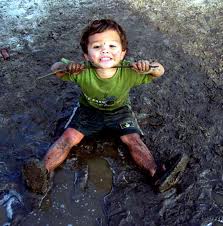 holes that need to be dug, and mudpies that need to be made. The world’s classroom teaches them that problems can be solved and obstacles can be conquered. When imaginations soar, everything becomes possible.
holes that need to be dug, and mudpies that need to be made. The world’s classroom teaches them that problems can be solved and obstacles can be conquered. When imaginations soar, everything becomes possible.
It is in the small moments of discovery that big dreams are born. When little fingers are buried in the earth, an archeologist has made his first dig. When curious eyes peer at stars through a paper-towel roll, an astronaut has made her first spacewalk. When small hands wrap a washcloth cast around a puppy’s paw, a doctor has healed his first patient.
Just as letters of the alphabet on their own have no meaning, but used in concert with each other can create poetry, literature, and song, so learning the mechanics of words and numbers alone has no purpose, but placed in the context of life being lived can create wonders as yet unseen.
‘Let the children play’ has become a clarion call in some parenting circles in recent years, and with good reason. With childhood obesity, illnesses, and depression rates all on the rise, examining the way we raise and educate our children is vital for the health of our children, our nation, and our future.
We need to find a place in our busy lives for children to be children, to enjoy the simple pleasures we enjoyed as children, to dream and imagine and create and become. Life is for living, and children are experts at living life to the fullest. We would do well to learn from them.
~~~~~~~~~~
My little funnyface enjoyed the movie version of The Lorax when we saw it last week, but then forgot all about it. But when we read the book together a few days later, it captured her imagination! She painted her face orange with face paints this morning, drew on a yellow Lorax mustache, and spent the entire day outside building a Lorax forest out of odds and ends she gathered from around the yard.
My sick baby has pneumonia and has been spiking a fever of up to 104 degrees the last few days. She’s been laminated to me, too sick to even hold up her little head, poor thing. But today when she saw a cardboard box she immediately climbed down off my lap and into the box where she played happily for a few minutes for the first time in days. Mommy’s heart was happy to see a little spark of my playful girl again, for sure. The power of a cardboard box knows no bounds!
Don’t believe in the wondrous power of play? Check out the next Steve Jobs/Bill Gates/Donald Trump in the making! Here’s the story of a nine year old boy, an old parts shop, and a cardboard box arcade:
Related posts:
Children who love to read…READ! Engaging children’s hearts in the wonder of reading instead of just training their minds in its mechanics. Raising Bookworms
Think homeschooled children are unsocialized, over-controlled, locked-away-from-the-world misfits? Think again! My Renaissance Girl
On a Winnie the Pooh style ‘long explore’ my little Pooh Bear discovered the world in ways only a toddler can do in…
Raising Super Readers~The MARVELous Power of Comic Books!
Playground Confessions~Look Who’s Talking!
Alphabet Fun~Imagination From A to Z!
Live to Play~Play to Learn~Learn to Live!
March 8, 2012 | Categories: books, childhood, children, children's books, fort, homeschooling, kindergarten, life, literacy, natural parenting, play, preschooler, reading, stress, toddler | Tags: childhood, children, children's books, homeschooling, natural parenting, nature, outdoors, parenting, park, play, playground, preschoolers, toddler | 32 Comments »  Award-winnning author, L.R.Knost, is the founder and director of the children's rights advocacy and family consulting group, Little Hearts/Gentle Parenting Resources, and Editor-in-Chief of Holistic Parenting Magazine. Books by L.R.Knost include Whispers Through Time: Communication Through the Ages and Stages of Childhood ; Two Thousand Kisses a Day: Gentle Parenting Through the Ages and Stages ; The Gentle Parent: Positive, Practical, Effective Discipline ; and Jesus, the Gentle Parent: Gentle Christian Parenting the first four books in the Little Hearts Handbook gentle parenting series, and children’s picture books Petey’s Listening Ears and the soon-to-be-released Grumpykins series.
Award-winnning author, L.R.Knost, is the founder and director of the children's rights advocacy and family consulting group, Little Hearts/Gentle Parenting Resources, and Editor-in-Chief of Holistic Parenting Magazine. Books by L.R.Knost include Whispers Through Time: Communication Through the Ages and Stages of Childhood ; Two Thousand Kisses a Day: Gentle Parenting Through the Ages and Stages ; The Gentle Parent: Positive, Practical, Effective Discipline ; and Jesus, the Gentle Parent: Gentle Christian Parenting the first four books in the Little Hearts Handbook gentle parenting series, and children’s picture books Petey’s Listening Ears and the soon-to-be-released Grumpykins series.
The Gift of Breastfeeding!
[Portions reprinted from Two Thousand Kisses a Day: Gentle Parenting Through the Ages and Stages by L.R.Knost. Whispers Through Time: Communication Through the Ages and Stages of Childhood, and The Gentle Parent: Positive, Practical, Effective Discipline also available on Amazon and through other major retailers.]
A newborn baby has only three demands. They are warmth in the arms of its mother, food from her breasts, and security in the knowledge of her presence. Breastfeeding satisfies all three. ~Grantly Dick-Read
Breastfeeding, like exercise, is one of the most highly preventive and cost-effective ways to protect the health of mothers, babies, the population, and the planet. Yet, the U.S. has one of the lowest rates of breastfeeding among industrialized countries and one of the highest rates of infant mortality. Our rates of breast cancer, diabetes, obesity, and asthma are growing at an alarming pace. It is estimated that normal breastfeeding rates could save the U.S. $13 billion and 911 lives annually on health care & associated costs for just 10 diseases.
Sweet, milky giggles
Baby’s trusting eyes look up
Forging bonds that last. R.H.
Excellent information from Kellymom about how to get a comfortable latch and position for nursing.
The Guggie Daily: God Wants to Breastfeed His People
 The Normal Newborn & Why Breastmilk isn’t Just Food
The Normal Newborn & Why Breastmilk isn’t Just Food
Breast Milk~The Original Soul Food
We have breasts to feed our young but we also have brains that tell us this is more than nutrition.. this is comfort, bonding, the original Soul food!
“Breastmilk, unlike formula is a living organism. When one looks at breastmilk under a microscope there is plenty of movement. Contrast that with formula, where the petri dish reveals a stagnant state. Formula is dead. It cannot change to meet the needs of a particular infant. It does not change during a feed…”
Lovely thoughts from a breastfeeding mama.
 What Kind of Woman Breastfeeds a Toddler?
What Kind of Woman Breastfeeds a Toddler?
An amazing array of women from every walk of life who share their breastfeeding journeys~Compiled and shared by The Mule
Low Milk Supply~Set up for failure
SIDS (Sudden Infant Death Syndrome), Asthma, Childhood Leukemia, Diabetes, Gastroenteritis, Otitis Media (ear infections), LRTIs (pneumonia, bronchitis, etc), Necrotizing Enterocolitis, Obesity, and other potentially life-altering or fatal conditions…
If you knew that there was one medicine or vitamin or herbal supplement that has been proven, PROVEN, beyond a shadow of a doubt in study after study by mainstream, published, respected doctors, researchers, and scientists, to significantly reduce the risk of every single one of those things listed above, would you give it to your baby?
Breast cancer, Ovarian Cancer, Diabetes, Heart Disease, Obesity…
What if that wonder drug could also drastically reduce your risk of each of these health threats?
13 billion…BILLION…dollars lost in the U.S. alone in PREVENTABLE medical costs.
If you knew that there was one thing you could do to save billions of taxpayer dollars that could go to feed the hungry, house the homeless, research cures for other devastating diseases, provide health care to the poor, would you do it?
The Journal of the American Academy of Pediatrics released a study in April of 2010 detailing just what that one medicine/vitamin/herbal supplement is…and the ‘miracle drug’ is 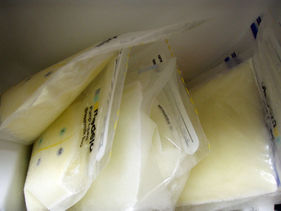 none other than BREASTFEEDING. The study concluded that, “The United States incurs $13 billion in excess costs annually and suffers 911 preventable deaths per year because our breastfeeding rates fall far below medical recommendations.” And those numbers are only based on breastfeeding benefits for the first six months of life! The World Health Organization, American Academy of Pediatrics, Centers for Disease Control, and others recommend breastfeeding for the first two years of a child’s life. Imagine the tally if the researchers had looked at the little lives lost and billions of dollars spent unnecessarily in a two year breastfeeding scenario instead of a six month scenario!
none other than BREASTFEEDING. The study concluded that, “The United States incurs $13 billion in excess costs annually and suffers 911 preventable deaths per year because our breastfeeding rates fall far below medical recommendations.” And those numbers are only based on breastfeeding benefits for the first six months of life! The World Health Organization, American Academy of Pediatrics, Centers for Disease Control, and others recommend breastfeeding for the first two years of a child’s life. Imagine the tally if the researchers had looked at the little lives lost and billions of dollars spent unnecessarily in a two year breastfeeding scenario instead of a six month scenario!
In 2009, the CDC released a Breast Feeding Report Card which showed that, while 74% of women start off breastfeeding, only 33% continue to three months and just 14% are exclusively breastfeeding by six months.
Clearly, then, the majority of women at least begin with the desire to breastfeed!
So why are breastfeeding rates so dismal in the United States? For one thing, U.S.hospitals scored a low D (63%) in their compliance with recommendations to provide breastfeeding  support for women in a 2007 CDC survey. One issue is that hospitals routinely send home ‘failure’ packets of formula with new mommies “just in case,” which sit temptingly in pretty, complementary diaperbags waiting for the inexperienced new mommy to face her first breastfeeding hurdle, her first feeding worry, her first sleep-deprived need to find any reassurance that she’s doing a good job feeding her baby during those first weeks. Another issue is that hospital lactation consultants are typically stretched far too thinly amongst many patients and are only available for a few minutes to get new mommies started, and then most insurance companies don’t cover follow-up lactation support after mommies leave the hospital. Other issues in the hospital include delaying the new mommy’s ability to begin breastfeeding immediately by removing the baby to a warming bed instead of laying the baby on the mommy’s tummy, and too early interventions such as eye ointment, bathing the baby, and taking the baby to the nursery to be evaluated in the absence of medical necessity.
support for women in a 2007 CDC survey. One issue is that hospitals routinely send home ‘failure’ packets of formula with new mommies “just in case,” which sit temptingly in pretty, complementary diaperbags waiting for the inexperienced new mommy to face her first breastfeeding hurdle, her first feeding worry, her first sleep-deprived need to find any reassurance that she’s doing a good job feeding her baby during those first weeks. Another issue is that hospital lactation consultants are typically stretched far too thinly amongst many patients and are only available for a few minutes to get new mommies started, and then most insurance companies don’t cover follow-up lactation support after mommies leave the hospital. Other issues in the hospital include delaying the new mommy’s ability to begin breastfeeding immediately by removing the baby to a warming bed instead of laying the baby on the mommy’s tummy, and too early interventions such as eye ointment, bathing the baby, and taking the baby to the nursery to be evaluated in the absence of medical necessity.
But, even so, 74% of American women triumph over these issues and leave the hospital having established breastfeeding with their newborn. So what happens then? Why does that number fall so dramatically by more than half to 33% by three months and by nearly 80% down to only 14% of women by six months?
Some contributing factors are mothers who must return to workplaces which don’t support breastfeeding with long lunches to return home to breastfeed or flexible schedules which allow for frequent pumping, and insurance companies which don’t cover lactation consultants or breast pumps, and, in a small percentage of cases, health issues with the mother or baby.
All of these issues certainly need to be addressed by hospitals, insurance companies and businesses, and the government can be of service in these areas by providing tax incentives, education, and support.
But there are still more subtle issues that negatively affect breastfeeding rates. Some of these include older mothers relishing in telling horror stories about cracked nipples, thrush, clogged ducts, etc; pediatricians who use weight charts based on formula fed infants and scaring new mothers into thinking their babies aren’t gaining enough weight; and the pervasive, but false, belief that formula is just as good as breastmilk for babies.
One issue, though, that seems to crop up far more than others is low milk supply. Somehow, even though mothers’ bodies are capable of miraculously growing a human being for nine months and bringing that precious new life into the world, those same life-giving bodies are failing to provide life-giving (and saving!) nutrition to those precious babies. Why? For some, it is certainly just fear-mongering by those pediatricians using the formula fed babies’ charts or by grandmothers who believe that all babies should be chubby that lead new mothers to believe they have low supply, but there does seem to be an ever-increasing number of babies legitimately labeled as failure-to-thrive with low milk supply labeled the cause.
that precious new life into the world, those same life-giving bodies are failing to provide life-giving (and saving!) nutrition to those precious babies. Why? For some, it is certainly just fear-mongering by those pediatricians using the formula fed babies’ charts or by grandmothers who believe that all babies should be chubby that lead new mothers to believe they have low supply, but there does seem to be an ever-increasing number of babies legitimately labeled as failure-to-thrive with low milk supply labeled the cause.
One crucial piece of false information can be blamed for the vast majority of low milk supply issues in the absence of a documented medical cause.
That false information? New mothers are told their babies should sleep through the night.
That is one of the most pernicious lies ever foisted on new parents. Babies biologically should NOT sleep through the night. Not only is the deep sleep required to sleep through the night actually a recognized factor in SIDS deaths, but babies who sleep through the night are also not nursing to stimulate breastmilk production, thus their mother’s milk begins to dry up. Clearly, that’s not a healthy biological design!
Here is a picture of what this vicious cycle can look like:
Lydia battles the lack of breastfeeding support at the hospital and triumphantly goes home a breastfeeding mother, formula ‘fail’ packet tucked securely in the chic little complementary diaperbag in the trunk along with stacks of information about how healthy formula is and lots of lovely formula coupons.
 She gets her precious baby home and settles in for her twelve week ‘babymoon’ before she has to return to work because that’s all the time her work allows. She’s already nervous about how she’s going to handle the return to work, leaving her sweet baby in someone else’s care, and trying to pump to maintain her milk supply and provide milk for her baby while she’s gone, but she pushes those thoughts aside and suppresses the anxiety as much as she can. The first few nights are pretty easy because her baby sleeps most of the time, so Lydia is able to get a little rest in between feedings. She reads up on some parenting advice in a couple of popular magazines and discovers that she should be working to schedule her baby’s feedings at 3-4 hour intervals. That makes her feel a bit worried because she’s just been feeding her baby whenever he seemed hungry, so she gets a notebook out and writes down a schedule.
She gets her precious baby home and settles in for her twelve week ‘babymoon’ before she has to return to work because that’s all the time her work allows. She’s already nervous about how she’s going to handle the return to work, leaving her sweet baby in someone else’s care, and trying to pump to maintain her milk supply and provide milk for her baby while she’s gone, but she pushes those thoughts aside and suppresses the anxiety as much as she can. The first few nights are pretty easy because her baby sleeps most of the time, so Lydia is able to get a little rest in between feedings. She reads up on some parenting advice in a couple of popular magazines and discovers that she should be working to schedule her baby’s feedings at 3-4 hour intervals. That makes her feel a bit worried because she’s just been feeding her baby whenever he seemed hungry, so she gets a notebook out and writes down a schedule.
Over the next couple of weeks, things get a bit more difficult as she walks and bounces and rocks her baby, anxiously watching the clock until she can satisfy her baby’s cries and nurse him. Her baby seems to be crying more and more often. As her stress level increases, she pours over parenting books and magazines, trying to find solutions to her baby’s distress. Over and over again, she reads that babies need to be on a strict schedule and be trained to self-soothe and sleep through the night.
Lydia desperately wants to be a good mother, so she braces herself and begins to stop nursing before her baby falls asleep and laying him down on his own to fall asleep alone. She cries listening to his screams, but confines herself to occasionally stepping into the room to pat him gently for a moment, tears streaming down her cheeks as she leaves him to cry himself to sleep.
A few weeks later, her pediatrician expresses some concern about her baby’s slowing weight gain, but cheerfully assures her that she has just become a ‘midnight snack’ for her little one and needs to begin cutting out night feeds so her baby can learn to sleep through the night.Lydia feels sick to her stomach as she leaves the doctor’s office, but is determined to put her feelings aside and be a good mother.
Lydia experiences some engorgement issues for the first few nights, but the discomfort is nothing compared her heartbreak at listening to her baby cry. Over the next few weeks, she notices a perceptible decrease in the volume of her breasts and her let down reflex feels weak. Her fears are confirmed when she takes her baby back to the pediatrician who is alarmed to find that Lydia’s baby has actually lost weight. Lydia leaves the pediatrician’s office with a diagnosis of failure-to-thrive for her precious baby, low milk supply for her, and a feeling of utter failure as a mother.
At home, Lydia searches for the chic little diaperbag with the formula ‘failure’ packet and mixes up a bottle, tears falling as she becomes just another statistic.
~~~~~~~~~
Feeling forced to ignore her natural mothering instincts because of prevailing mainstream parenting practices, Lydia’s anxiety steadily increased in her baby’s first weeks, negatively affecting her milk supply. Nursing on a schedule prevented her from receiving the stimulation of milk production inherent in the frequent suckling of a baby allowed to nurse on demand. But the breastfeeding coffin was sealed when night nursing ended and with it the loss of hours and hours of milk stimulation resulting in that modern epidemic ~ low milk supply.
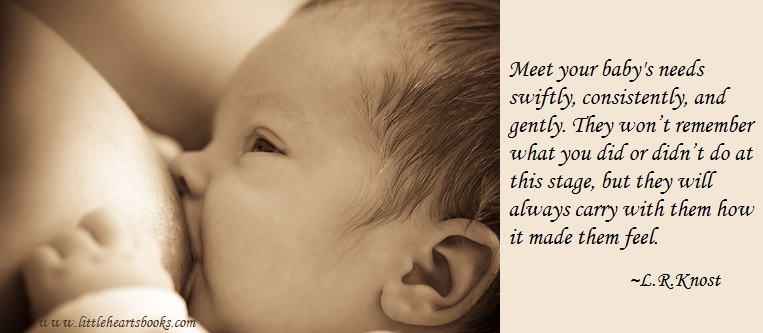 Related links:
Related links:
Love in the Time of Cosleeping
And Baby Makes Three~Surviving the first three months with a newborn!
Breastfeeding, Babywearing, and Bouncing Back into Shape after Baby
A Boy, A Girl, and A Baby~Journey to Gentle Parenting
Babywearing Basics Resource Guide
Practical Gentle Discipline Guide
November 22, 2011 | Categories: attachment parenting, Bible, birth, breastfeeding, Christian parenting, cosleeping, food, gentle parenting, natural parenting, pregnancy | Tags: attachment parenting, Bible, birth, breastfeeding, Christian parenting, food, gentle parenting, natural parenting, nature, newborn | 21 Comments »  Award-winnning author, L.R.Knost, is the founder and director of the children's rights advocacy and family consulting group, Little Hearts/Gentle Parenting Resources, and Editor-in-Chief of Holistic Parenting Magazine. Books by L.R.Knost include Whispers Through Time: Communication Through the Ages and Stages of Childhood ; Two Thousand Kisses a Day: Gentle Parenting Through the Ages and Stages ; The Gentle Parent: Positive, Practical, Effective Discipline ; and Jesus, the Gentle Parent: Gentle Christian Parenting the first four books in the Little Hearts Handbook gentle parenting series, and children’s picture books Petey’s Listening Ears and the soon-to-be-released Grumpykins series.
Award-winnning author, L.R.Knost, is the founder and director of the children's rights advocacy and family consulting group, Little Hearts/Gentle Parenting Resources, and Editor-in-Chief of Holistic Parenting Magazine. Books by L.R.Knost include Whispers Through Time: Communication Through the Ages and Stages of Childhood ; Two Thousand Kisses a Day: Gentle Parenting Through the Ages and Stages ; The Gentle Parent: Positive, Practical, Effective Discipline ; and Jesus, the Gentle Parent: Gentle Christian Parenting the first four books in the Little Hearts Handbook gentle parenting series, and children’s picture books Petey’s Listening Ears and the soon-to-be-released Grumpykins series.
10 Steps to Surviving the First Three Months with a Newborn
[Reprinted from Two Thousand Kisses a Day: Gentle Parenting Through the Ages and Stages by L.R.Knost. Whispers Through Time: Communication Through the Ages and Stages of Childhood; The Gentle Parent: Positive, Practical, Effective Discipline; and Jesus, the Gentle Parent: Gentle Christian Parenting also now available on Amazon and through other major retailers.]
~~~~~~~~~~~~~~~~~~~~~
 So, your precious baby has finally arrived! After a perfect pregnancy and blissful labor and delivery, you’ve come home (in your pre-pregnancy clothes, of course!) with your beautiful baby, ready to start life as the perfect parents of a perfect child. Yeah, right! Actually, after a pregnancy in which you threw up more times than you can count and yet still managed to gain an embarrassing amount of weight, and where your feet swelled to unrecognizable lumps at the bottom of your legs, you finally suffered through a hideously long, painful labor and delivery only to arrive home (in your largest maternity outfit which barely fit!) with a screaming, vomiting, miniature human being who can’t tell you why he’s upset and who poops what can only be described as TAR! What are you going to do now?!?
So, your precious baby has finally arrived! After a perfect pregnancy and blissful labor and delivery, you’ve come home (in your pre-pregnancy clothes, of course!) with your beautiful baby, ready to start life as the perfect parents of a perfect child. Yeah, right! Actually, after a pregnancy in which you threw up more times than you can count and yet still managed to gain an embarrassing amount of weight, and where your feet swelled to unrecognizable lumps at the bottom of your legs, you finally suffered through a hideously long, painful labor and delivery only to arrive home (in your largest maternity outfit which barely fit!) with a screaming, vomiting, miniature human being who can’t tell you why he’s upset and who poops what can only be described as TAR! What are you going to do now?!?
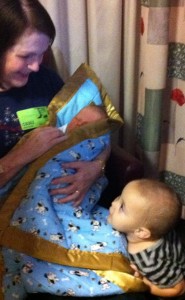 First, call your mommy! No, really, if you have a mom or a grandma or an aunt or a good friend who has any experience with babies, ask for help! As long as there have been babies being born, there have been women gathering around to help new mamas through those first intense weeks with a newborn. Experienced helpers can make all the difference in how well you survive the sleepless nights, crazy hormones, and vast uncertainties that come with being a new parent.
First, call your mommy! No, really, if you have a mom or a grandma or an aunt or a good friend who has any experience with babies, ask for help! As long as there have been babies being born, there have been women gathering around to help new mamas through those first intense weeks with a newborn. Experienced helpers can make all the difference in how well you survive the sleepless nights, crazy hormones, and vast uncertainties that come with being a new parent.
Beware, though, the experienced helpers who are a bit too helpful and try to push you out of the way even to the extent of trying to guilt you into leaving your baby behind to go on a walk or a date-night ‘for the good of your marriage.’ In the first place, having to leave your baby behind to preserve your marriage isn’t a great precedent to set with your husband. You two are in this together and setting a precedent of family first is a good idea! And secondly, the whole point of having help is not only for you to recover, but also so you can become experienced yourself in taking care of your baby. And on that note…
Second, while accepting help is vital, make sure that everyone knows that this baby is YOUR baby and YOU will decide what is best for you and your child. Listen to all the advice; take what makes sense to you; and chuck the rest. Let your helpers do the housework and the cooking and the errands while you take care of and get to know the new little addition to your family. If your instincts tell you to hold your baby, even while she sleeps, then hold your baby even while she sleeps! If your instincts tell you to nurse your crying baby even though you just nursed fifteen minutes ago, then nurse your baby! God gave you those instincts for a reason, so don’t ignore them!
Third, I know we’ve all heard the ‘sleep when your baby is sleeping’ advice. Listen to that advice! Short little naps may not seem all that helpful in theory, but they can be lifesavers when getting used to the rigors of new parenthood. And keep reminding yourself that it will get better, because it will!
Fourth, whether you’ve chosen to breastfeed or bottle feed, expect your little one to eat erratically right at first. Remember, babies nutritional needs were met with a constancy and lack of effort in utero that can’t be fully replicated outside the womb. Their tummies are only about the size of a walnut in the first days, so they can’t eat enough at a feeding to last them more than two or three hours at most, and often far less! Also, if you’re breastfeeding it’s common to worry that your baby isn’t getting enough milk, but if you keep in mind how itty bitty their little tummies are, you’ll realize that it doesn’t take much to fill them up. Things to consider with breastfeeding are getting a good latch and establishing your supply, among others, and it’s often helpful to consult a lactation specialist for guidance. There are excellent resources available in most communities through your local hospital as well as online resources such as La Leche League and Kellymom.com.
about the size of a walnut in the first days, so they can’t eat enough at a feeding to last them more than two or three hours at most, and often far less! Also, if you’re breastfeeding it’s common to worry that your baby isn’t getting enough milk, but if you keep in mind how itty bitty their little tummies are, you’ll realize that it doesn’t take much to fill them up. Things to consider with breastfeeding are getting a good latch and establishing your supply, among others, and it’s often helpful to consult a lactation specialist for guidance. There are excellent resources available in most communities through your local hospital as well as online resources such as La Leche League and Kellymom.com.
Fifth, while bathing baby may be fun, it really isn’t necessary and might be rather traumatic for them. ‘Topping and tailing’ is a term that means taking a warm, wet cloth (no soap) and gently washing their eyes (inner corner to outer corner to avoid infection), face, ears, head, and neck, and then washing their bottom, being careful to clean out all the little cracks and crevices. Follow that with cord care (gently cleaning the cord area with a cotton swab moistened with a bit of alcohol or just water), and you’re done!
 Sixth, birth is a huge transition for a baby. From a warm, dark, weightless environment where all their needs are met, sounds are muffled, and mama’s heartbeat lulls them to sleep, they are abruptly ejected into a cold, loud, bright world where they experience hunger and discomfort and loneliness and fear for the first time. You can help your little one cope by easing the transition for him. Keeping the lights a bit dimmer and the sounds a bit more muted right at first is helpful in welcoming your baby to your world. Also, it’s helpful to wear your baby in those first transitional weeks (and often far longer when you discover how convenient it is!). Babywearing is a term that refers to using a baby carrier, wrap, or sling to keep your baby close to you where he can hear your heartbeat and feel your warmth and closeness in an approximation of your womb. All of these things will help to reduce your baby’s stress as he acclimates to his new environment, and a less stressed baby tends to result in a less stressed mommy. And, don’t forget daddy! Babywearing is a wonderful way for daddies to bond with their babies. Studies have shown that close physical contact between fathers and their infants causes a hormonal response similar to when a mother gives birth, increasing the nurturing response naturally and paving the way for a healthy attachment and strong parent/child relationship.
Sixth, birth is a huge transition for a baby. From a warm, dark, weightless environment where all their needs are met, sounds are muffled, and mama’s heartbeat lulls them to sleep, they are abruptly ejected into a cold, loud, bright world where they experience hunger and discomfort and loneliness and fear for the first time. You can help your little one cope by easing the transition for him. Keeping the lights a bit dimmer and the sounds a bit more muted right at first is helpful in welcoming your baby to your world. Also, it’s helpful to wear your baby in those first transitional weeks (and often far longer when you discover how convenient it is!). Babywearing is a term that refers to using a baby carrier, wrap, or sling to keep your baby close to you where he can hear your heartbeat and feel your warmth and closeness in an approximation of your womb. All of these things will help to reduce your baby’s stress as he acclimates to his new environment, and a less stressed baby tends to result in a less stressed mommy. And, don’t forget daddy! Babywearing is a wonderful way for daddies to bond with their babies. Studies have shown that close physical contact between fathers and their infants causes a hormonal response similar to when a mother gives birth, increasing the nurturing response naturally and paving the way for a healthy attachment and strong parent/child relationship.
Seventh, there is a big divide in parenting circles between the ‘co-sleepers’ and the ‘crib-sleepers’ so be aware that whichever choice you make will probably be challenged by more than one of your friends or relatives or even complete strangers who seem to have no issues with giving advice to someone they don’t know! Bottom line, if you choose to co-sleep, check here for ‘safe co-sleeping’ options, and then follow your instincts! If you choose to put your little one in a crib or bassinet, do yourself a favor and put it next to your bed to reduce your travel time in the middle of the night. You’ll thank me, I promise!
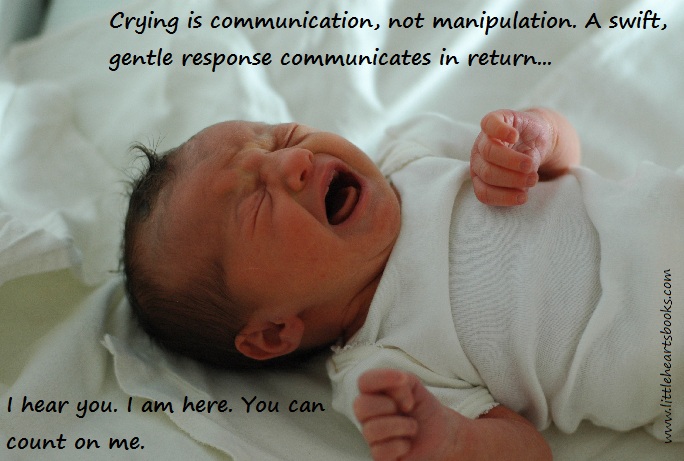 Eighth, your baby is completely and totally helpless in every way. Her main mode of communication is crying. Medical experts agree that it isn’t possible to spoil a newborn, and you are just at the beginning stages of building a trust relationship, so respond promptly to your little one’s cries! Your immediate response to your baby’s needs will help her begin to learn that she can count on you when she needs you and that she doesn’t have to ‘fight’ for your attention. Babies left to cry-it-out often do sleep through the night sooner than babies whose needs are responded to because they have learned to give up on their needs being met. But that ‘gain’ of sleeping through the night is accomplished at the ‘loss’ of trust, and the long-term consequences of a child giving up on her parents simply aren’t worth it.
Eighth, your baby is completely and totally helpless in every way. Her main mode of communication is crying. Medical experts agree that it isn’t possible to spoil a newborn, and you are just at the beginning stages of building a trust relationship, so respond promptly to your little one’s cries! Your immediate response to your baby’s needs will help her begin to learn that she can count on you when she needs you and that she doesn’t have to ‘fight’ for your attention. Babies left to cry-it-out often do sleep through the night sooner than babies whose needs are responded to because they have learned to give up on their needs being met. But that ‘gain’ of sleeping through the night is accomplished at the ‘loss’ of trust, and the long-term consequences of a child giving up on her parents simply aren’t worth it.
Ninth, baby yourself! Whether you’ve had a c-section or a vaginal birth, your body has been through the wringer; your hormones are all over the place; and your lack of sleep is not helping matters! Have someone make you a ‘survival basket’ with water bottles, granola bars, minty gum, hand sanitizer, diapers, baby wipes, burp rags, and, most importantly, chocolate! It needs to be small and light enough for you to take from room to room with you while carrying your baby. Also, have someone make a comfy area in your living room for you to nurse (with your survival basket within reach!) and a changing area so you don’t have to go back and forth to the bedroom or nursery throughout the day. Take showers when you can. Accept casseroles and other offerings of meals from friends and church members and co-workers. And, if you don’t have help for the housework, just do the bare minimum so you can rest and recover and focus on getting to know your precious new baby!
Tenth, baby your marriage! This is a huge, huge, huge transition for you and your husband, so both of you apologize to each other in advance for any temper tantrums, thoughtless words, or unmet needs that might (will!) occur in the foreseeable future. You are going from ‘the two of us’ to ‘we three’ and, just as with anything else, change isn’t easy. Husbands, it’s not about you right now, period. Yes, you have your own issues to deal with in becoming a parent for the first time, but you need to put that aside for the first weeks and concentrate on your wife and child. Your wife isn’t just having to deal with becoming a mommy, but her body has been through an incredible transition during the previous nine months followed by the trauma of labor and delivery followed by crashing hormones, the trials of learning to breastfeed (or deal with engorgement issues if choosing to bottle feed), and the exhaustion of dealing with a newborn’s erratic sleep patterns. If she’s also had a c-section, you can add major abdominal surgery to that list! So, husbands, put your own issues aside and baby your wife and baby for the time being! Wives, a little verbal acknowledgement goes a long way with husbands, so try to muster up enough energy to tell your husband that you appreciate him and understand that he is trying to figure out this new life just like you are, and assure him that eventually you will be you again! (Yes, you will. It just takes time!)
going from ‘the two of us’ to ‘we three’ and, just as with anything else, change isn’t easy. Husbands, it’s not about you right now, period. Yes, you have your own issues to deal with in becoming a parent for the first time, but you need to put that aside for the first weeks and concentrate on your wife and child. Your wife isn’t just having to deal with becoming a mommy, but her body has been through an incredible transition during the previous nine months followed by the trauma of labor and delivery followed by crashing hormones, the trials of learning to breastfeed (or deal with engorgement issues if choosing to bottle feed), and the exhaustion of dealing with a newborn’s erratic sleep patterns. If she’s also had a c-section, you can add major abdominal surgery to that list! So, husbands, put your own issues aside and baby your wife and baby for the time being! Wives, a little verbal acknowledgement goes a long way with husbands, so try to muster up enough energy to tell your husband that you appreciate him and understand that he is trying to figure out this new life just like you are, and assure him that eventually you will be you again! (Yes, you will. It just takes time!)
Final thoughts: One of the things that has kept me going through giving birth to six children (and losing several others along the way) is the assurance that ‘this too shall pass.’ As with all changes in life, it takes time to adjust, but reminding yourself that this ‘will pass,’ and you will adjust, and life will go on is very, very helpful! Also, take time to enjoy the little things–the sweet smell of your newborn’s tiny head, the soft sounds of his breathing as he sleeps, the sight of your spouse staring into your beautiful baby’s eyes–because too soon this time will pass and these precious moments will become mere memories. Congratulations and God bless!
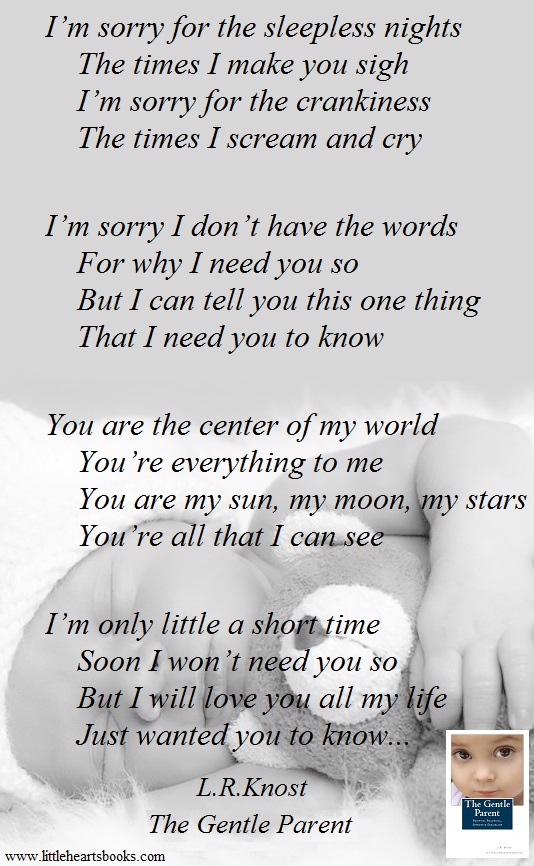 Related links:
Related links:
Love in the Time of Cosleeping
A Boy, A Girl, and A Baby~Journey to Gentle Parenting
300+ Nicknames for Your Babykins…Doodlebug…Snugglebunny…
200 Ways to Bless Your Children with a Happy Childhood
Babywearing Basics Resource Guide
Breastfeeding, Babywearing, and Bouncing Back into Shape after Baby
Practical, Gentle, Effective Discipline
Four Ways Attachment Parenting Can Reduce the Risk of SIDS
The Science of Sleep: Newborns
Where Did You Learn Love, Child?
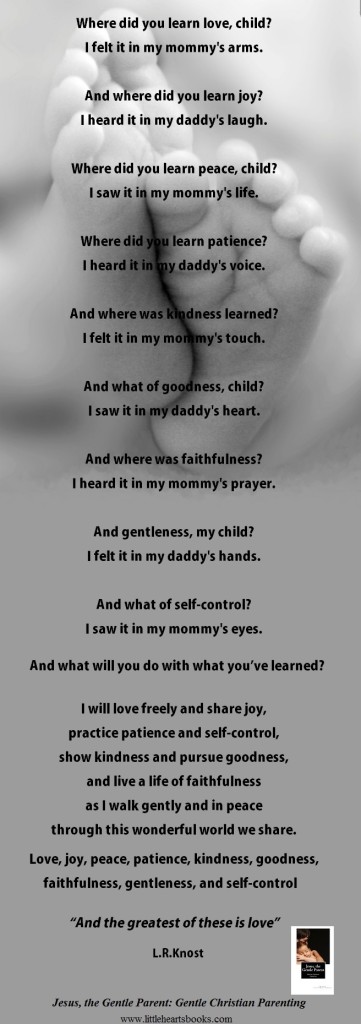
November 20, 2011 | Categories: attachment parenting, babywearing, breastfeeding, Christian, cosleeping, natural parenting, newborn | Tags: attachment parenting, babywearing, breastfeeding, Christian, Christian parenting, cosleeping, gentle discipline, gentle parenting, natural parenting, newborn, positive parenting | 35 Comments »  Award-winnning author, L.R.Knost, is the founder and director of the children's rights advocacy and family consulting group, Little Hearts/Gentle Parenting Resources, and Editor-in-Chief of Holistic Parenting Magazine. Books by L.R.Knost include Whispers Through Time: Communication Through the Ages and Stages of Childhood ; Two Thousand Kisses a Day: Gentle Parenting Through the Ages and Stages ; The Gentle Parent: Positive, Practical, Effective Discipline ; and Jesus, the Gentle Parent: Gentle Christian Parenting the first four books in the Little Hearts Handbook gentle parenting series, and children’s picture books Petey’s Listening Ears and the soon-to-be-released Grumpykins series.
Award-winnning author, L.R.Knost, is the founder and director of the children's rights advocacy and family consulting group, Little Hearts/Gentle Parenting Resources, and Editor-in-Chief of Holistic Parenting Magazine. Books by L.R.Knost include Whispers Through Time: Communication Through the Ages and Stages of Childhood ; Two Thousand Kisses a Day: Gentle Parenting Through the Ages and Stages ; The Gentle Parent: Positive, Practical, Effective Discipline ; and Jesus, the Gentle Parent: Gentle Christian Parenting the first four books in the Little Hearts Handbook gentle parenting series, and children’s picture books Petey’s Listening Ears and the soon-to-be-released Grumpykins series.
A September to Remember: Respectful Communication And Self Esteem
Our next guest for ~A September to Remember~ is The Twin Coach . If you enjoy her post (and you will!) don’t forget to check out her website!
 I had the good fortune last night to attend a meeting at which Sara Schuelein Perets, the director of our children’s preschool, was speaking. I have written about her and the school in previous posts and am truly a huge fan of hers. The topic of the meeting was using empathetic communication to avoid power struggles with our children. As parents we all want our children to have good self-esteem. But it is not where they go to school or what gadgets they have that gives them this; it is a relationship with their parents that is full of honor, respect and optimism that allows our children to grow up into the adults we envision them becoming. Our language, and the way we choose to communicate with children, reflects who they are and how they see themselves. For me, that is the key to self-esteem; the way we speak to our children is more important than anything we do or even what we actually say.
I had the good fortune last night to attend a meeting at which Sara Schuelein Perets, the director of our children’s preschool, was speaking. I have written about her and the school in previous posts and am truly a huge fan of hers. The topic of the meeting was using empathetic communication to avoid power struggles with our children. As parents we all want our children to have good self-esteem. But it is not where they go to school or what gadgets they have that gives them this; it is a relationship with their parents that is full of honor, respect and optimism that allows our children to grow up into the adults we envision them becoming. Our language, and the way we choose to communicate with children, reflects who they are and how they see themselves. For me, that is the key to self-esteem; the way we speak to our children is more important than anything we do or even what we actually say.
Understand Your Child’s Needs
So how do we build this honest relationship with our children? According to Sara, it all begins in getting to really know your child. As a preschool director as well as a parent and teacher educator, she knows that in order to do this you must learn to observe your children well. At every moment every child (in fact, every person) has a need. It is your job to figure out what your children’s needs are. Do they need to construct? Do they need to feel powerful? Do they need to figure out how things work? That is, ask yourself “in this moment that my child is (having a meltdown, banging a pot on the table, arguing with his baby sister etc.) what does he need?” Does he need a hug? Is he needing to understand how things work? Does he need to be understood? Is he in physical discomfort? If you are able to step back and consider what need is being met or what need is not being met, you will have a better idea of how to connect as opposed to simply reacting.
every moment every child (in fact, every person) has a need. It is your job to figure out what your children’s needs are. Do they need to construct? Do they need to feel powerful? Do they need to figure out how things work? That is, ask yourself “in this moment that my child is (having a meltdown, banging a pot on the table, arguing with his baby sister etc.) what does he need?” Does he need a hug? Is he needing to understand how things work? Does he need to be understood? Is he in physical discomfort? If you are able to step back and consider what need is being met or what need is not being met, you will have a better idea of how to connect as opposed to simply reacting.
Learn About Child Development
Sara’s advice for the second step in building your relationship with your children is to really learn about child development. By this she doesn’t simply mean the “flavor of the month” latest in pop psychology, but by beginning with the real theorists such as Eriksson, Piaget and Skinner [note: if these seem too intimidating, or you don’t agree with these theorists’ views, I highly recommend the series “Your One Year Old”, “Your Two Year Old” etc. I have “Your Three Year Old” highlighted in my “Great Parenting Books” section]. When you really understand a child’s stages of development you know what is age appropriate and you can accept what is happening much more easily. There is less anxiety as a parent when your 2 year old is biting if you know that this is actually a developmentally appropriate stage.
Reflect The World Back To Them
The next thing discussed was using reflective language. This allows your children to experience things through their own eyes as opposed to coloring it with our value judgments. If we can avoid evaluative statements such as “that’s a beautiful painting!” or “you did such a good job!”, we avoid raising children who become reliant on praise and who look to us to know whether something is of value. Instead, reflective language such as “I see you are painting a picture. Can you tell me about it?” allows them to reflect their place in the world and their experience as they see it. Additionally, as parents we need to reflect emotions that are varied, subtle and which move beyond just “happy” and “sad”: “I see that you are very frustrated/disappointed/lonely now. I’m sorry about that.” Be in the emotion with them as opposed to trying to solve it. Instead of saying, “Don’t cry”, let them know that all emotions are fine, but all behavior is not. Really let your children feel the fullness of their emotions. If you are constantly trying to fix things for them you don’t allow them to feel the full range of emotions and they don’t learn to work through these emotions. I always point out (to women in particular) how frustrating it is for us when we complain about something and someone (usually our husbands) immediately launches into “fix it” mode; sometimes all we want is to be heard, to feel felt, to complain. The theory is the same when it comes to our children. You don’t need to solve everything for them; it is often better to just reflect what they are experiencing (“you’re having a hard time getting that puzzle done”) and then sit back and see what happens next.
job!”, we avoid raising children who become reliant on praise and who look to us to know whether something is of value. Instead, reflective language such as “I see you are painting a picture. Can you tell me about it?” allows them to reflect their place in the world and their experience as they see it. Additionally, as parents we need to reflect emotions that are varied, subtle and which move beyond just “happy” and “sad”: “I see that you are very frustrated/disappointed/lonely now. I’m sorry about that.” Be in the emotion with them as opposed to trying to solve it. Instead of saying, “Don’t cry”, let them know that all emotions are fine, but all behavior is not. Really let your children feel the fullness of their emotions. If you are constantly trying to fix things for them you don’t allow them to feel the full range of emotions and they don’t learn to work through these emotions. I always point out (to women in particular) how frustrating it is for us when we complain about something and someone (usually our husbands) immediately launches into “fix it” mode; sometimes all we want is to be heard, to feel felt, to complain. The theory is the same when it comes to our children. You don’t need to solve everything for them; it is often better to just reflect what they are experiencing (“you’re having a hard time getting that puzzle done”) and then sit back and see what happens next.
Family Mission Statement
We’re all somewhat familiar with the idea of a mission statement from college term papers or even resume writing. Sara’s idea in this case is quite similar. Write one or two sentences that capture what you want to achieve as a family or what values you want to instill. In some ways, without this declaration of intent, you are just drifting through your days. So give it some thought; what things do you believe in? What do you stand for? What rituals have meaning for you? An example of a family mission statement is “To treat each other with love, respect and honesty and to always listen to each other”. Once you have your statement, frame it, hang it up, put it on the door of your children’s bedroom; basically, show that this statement has some value and importance to your family. And don’t forget, you’ll want to revisit your statement from time to time, as your children get older to see if it needs updating.
 Respectful Communication
Respectful Communication
Sara spoke about a few key ingredients for diffusing power struggles and building self-esteem, in particular “I” messages and tone of voice. Imagine that your child has thrown all of his toy trains around the room and is refusing to clean them up. You might feel like saying: “You are making such a mess! You never clean up and you’re making me so frustrated!”. The problem is, this type of language, and the tone in which you would probably would say it, succeeds in making your child feel small, weak, powerless and very defensive. This is a perfect scenario for a power struggle. If, however, you use a calm tone of voice and say something like: “I’m really frustrated. It looks like there are too many toys here; maybe we need to get rid of some” you are instead setting up a situation in which they have some power and they feel respected. When they feel this way they want to cooperate. When your children do what you ask them to do, don’t use “good job” as a way to praise or say thank you. Instead, say something along the lines of “I’m so happy that you remembered to clean up; that makes me so happy”. This way of speaking shows that you appreciate them. Additionally, it is specific enough so that they understand what they did to make you happy, thus giving them a clear idea of what they can do the next time.
Empathetic Listening and Being a “Big Boy/Girl”
The last part of the evening Sara spent discussing these last two concepts. When we set boundaries and our children experience natural consequences, they will probably be upset, angry, sad etc. We must be empathetic about these emotions. By saying to them “Don’t cry, everything will be OK,” we are telling them that their feelings are not ok to have. You want to comfort your children but not coddle them. Additionally, teach them to cope and sort out how they feel. For example, if your child were to fall down you could say, “Did you fall down? That must have hurt! Let me make it all better” which is a very natural reaction for most parents. However, you might want to draw out their experience by letting them tell you what happened and, as described above when I was talking about reflective listening, don’t add your judgments into it. Perhaps it didn’t hurt. Maybe they were startled or embarrassed or scared. Let them figure out their emotions and then, perhaps, offer an empathetic “I’m sorry you fell. That must have been scary (or whatever the emotion was). What would you like to do now?”
As for the “big boy”, “big girl” comments which many parents use as praise or a way to encourage cooperation, Sara’s belief is that this can actually backfire. For most children the world feels really huge and, in comparison, children can feel awfully small. Constantly referring to your children as “big” when they don’t feel that way can result in the child acting out in an effort to feel powerful. Additionally, when you label a child “big”, she then feels that she has to live up to that label which can cause regression in some instances. For example, Sara brought up the “big girl bed”. When your child moves from the crib to a big bed it can be really scary for them. If it is loaded with all sorts of “encouragement” about how the child is now a “big girl” and gets to have this wonderful new thing because of it, the child may think along the lines of “if I do something where I’m not acting big, will I have my bed taken away?”. Better to just call it a new bed or a big bed but not label your child as “big”. Another example Sara used was in reference to potty use. “Look at Johnny! He’s such a big boy, he goes pee pee in the potty!” and the there’s Sam who has felt like a big boy up until now but begins to wonder if maybe he’s not big after all because he’s not quite ready to use the potty. Better to just say Johnny must feel so proud of himself for peeing in the potty and Sam will go too, when he’s ready.
And so the evening ended. I think we could have gone on talking to Sara for hours more. I am a compulsive note taker when I go to these types of workshops. In part because I anticipate being able to write a post which I hope will interest and enlighten those who read my blog; I’ve also noticed that in taking these classes, attending these lectures and writing these posts I am able to take information I am somewhat familiar with already and make it fresh in my mind once again. Thus, today I noticed myself being much more patient and more in tune with our children. I think, for me, the act of writing about parenting keeps me in the moment and in the best frame of mind to be the kind of parent I want to be. Thanks for indulging me!
If you are interested in private parenting consultations with Sara Schuelein Perets or to put together a group workshop with her (6 weeks, 10 person maximum), she can be reached at sara@thesunshineshack.com. We feel truly blessed to have found a school run by such a remarkable woman. If you have the chance to work on your parenting skills with her one on one or in an intimate group, I highly recommend it.
Thanks for reading!
-Gina, The Twin Coach
September 13, 2011 | Categories: attachment parenting, family, gentle discipline, gentle parenting, parenting guide, positive discipline | Tags: attachment parenting, childhood, children, gentle discipline, gentle parenting, natural parenting, positive parenting | Leave A Comment »  Award-winnning author, L.R.Knost, is the founder and director of the children's rights advocacy and family consulting group, Little Hearts/Gentle Parenting Resources, and Editor-in-Chief of Holistic Parenting Magazine. Books by L.R.Knost include Whispers Through Time: Communication Through the Ages and Stages of Childhood ; Two Thousand Kisses a Day: Gentle Parenting Through the Ages and Stages ; The Gentle Parent: Positive, Practical, Effective Discipline ; and Jesus, the Gentle Parent: Gentle Christian Parenting the first four books in the Little Hearts Handbook gentle parenting series, and children’s picture books Petey’s Listening Ears and the soon-to-be-released Grumpykins series.
Award-winnning author, L.R.Knost, is the founder and director of the children's rights advocacy and family consulting group, Little Hearts/Gentle Parenting Resources, and Editor-in-Chief of Holistic Parenting Magazine. Books by L.R.Knost include Whispers Through Time: Communication Through the Ages and Stages of Childhood ; Two Thousand Kisses a Day: Gentle Parenting Through the Ages and Stages ; The Gentle Parent: Positive, Practical, Effective Discipline ; and Jesus, the Gentle Parent: Gentle Christian Parenting the first four books in the Little Hearts Handbook gentle parenting series, and children’s picture books Petey’s Listening Ears and the soon-to-be-released Grumpykins series.
Co-sleeping Safely~Is it possible? Decide for yourself!
 SIDS: The Latest Research on How Sleeping With Your Baby is Safe | Dr. Sears Official Website | Pare
SIDS: The Latest Research on How Sleeping With Your Baby is Safe | Dr. Sears Official Website | Pare
Dr. Sears is considered the leading authority on gentle/attachment parenting and is a proponent of co-sleeping. Here he examines the research linking decreased SIDS risks with the increase in co-sleeping rates. Dr. Sears~ “Here are some ways to educate parents on how to sleep safely with their baby.”
 Cosleeping and Biological Imperatives: Why Human Babies Do Not and Should Not Sleep Alone
Cosleeping and Biological Imperatives: Why Human Babies Do Not and Should Not Sleep Alone
“While many theories are flying around about the cause of SIDS, most focus on the deepness of sleep and how it affects the child’s breathing…Another theory which you may not be familiar with is that the crib mattress itself is to blame for SIDS cases…Arsenic, phosphorus and antimony are intentionally added to crib mattresses by the manufacturers as fire retardants. SIDS was very rare prior to the 1950s when these additives became standard.”
Related posts:
And Baby Makes Three~Surviving the First Three Months with a Newborn
Bizarre Anti-Cosleeping Ads in Milwaukee a Red Herring?
A Boy, A Girl, and A Baby~Journey to Gentle Parenting
August 9, 2011 | Categories: attachment parenting, babywearing, birth, breastfeeding, cosleeping, food, gentle parenting, natural parenting, newborn, parenting guide, pregnancy | Tags: attachment parenting, babywearing, birth, breastfeeding, childhood, children, cosleeping, gentle parenting, natural parenting, nature, newborn, positive parenting, pregnancy, sacrifice, sacrificial parenting | 8 Comments »  Award-winnning author, L.R.Knost, is the founder and director of the children's rights advocacy and family consulting group, Little Hearts/Gentle Parenting Resources, and Editor-in-Chief of Holistic Parenting Magazine. Books by L.R.Knost include Whispers Through Time: Communication Through the Ages and Stages of Childhood ; Two Thousand Kisses a Day: Gentle Parenting Through the Ages and Stages ; The Gentle Parent: Positive, Practical, Effective Discipline ; and Jesus, the Gentle Parent: Gentle Christian Parenting the first four books in the Little Hearts Handbook gentle parenting series, and children’s picture books Petey’s Listening Ears and the soon-to-be-released Grumpykins series.
Award-winnning author, L.R.Knost, is the founder and director of the children's rights advocacy and family consulting group, Little Hearts/Gentle Parenting Resources, and Editor-in-Chief of Holistic Parenting Magazine. Books by L.R.Knost include Whispers Through Time: Communication Through the Ages and Stages of Childhood ; Two Thousand Kisses a Day: Gentle Parenting Through the Ages and Stages ; The Gentle Parent: Positive, Practical, Effective Discipline ; and Jesus, the Gentle Parent: Gentle Christian Parenting the first four books in the Little Hearts Handbook gentle parenting series, and children’s picture books Petey’s Listening Ears and the soon-to-be-released Grumpykins series.
Wishes Week 2011~Wrapping it up & putting a bow on top!
Thank you to all of my awesome guests this week for Wishes Week 2011! You gave me a very special birthday gift I will never forget by sharing your wishes with me. Here’s a ((hug)) for each one of you! And now, the ‘wrap up’~

Glimpses My opening contribution to Wishes Week 2011~Glimpses of hope and healing

Meanderings by Rosemary Jones Gritty urban prose by one of my favorite writers…powerful!

My Parenting Wish: Through A Child’s Eyes A beautifully intimate look at compassionate parenting by The Hippie Housewife. Love this!

Birth Wishes Thank you to Becoming Crunchy for this powerful and heartfelt look at birthing options and empowering women…awesome!!!

I wish that I were the Mother that I play at the grocery store. Here is a quirky look at the realities of mommyhood by Jessica, author of Parenting Wild Things!

“What I Wish Every Mother Knew About Babies and Sleep” This wins the prize for most viewed post of the week from Adventures in Mommyhood over at Instinctual Mamas. This is a passionate, informative, and convicting article on meeting babies’ needs gently. Beautiful!

Mommy Wishes From one Mommy’s heart to yours~Mommy Wishes by The Mom: Informed

When God says ‘No’ ~ Wishes Week 2011
~My closing post for Wishes Week~
Thank you to everyone who joined me for Wishes Week 2011! Your comments and ‘presence’ (lol) were much appreciated!
August 7, 2011 | Categories: attachment parenting, babywearing, Bible, birth, breastfeeding, children's books, Christian, Christian parenting, cosleeping, food, gentle discipline, gentle parenting, Jesus, loss, miscarriage, natural parenting, newborn, orphans, parenting guide, positive discipline, pregnancy, pregnancy loss | Tags: attachment parenting, babywearing, Bible, birth, breastfeeding, childhood, Christian parenting, cosleeping, food, gentle parenting, Jesus, loss, miscarriage, natural parenting, nature, newborn, orphans, parenting, positive, positive parenting, pregnancy, sacrifice, sacrificial parenting, stillbirth, Uganda | Leave A Comment »  Award-winnning author, L.R.Knost, is the founder and director of the children's rights advocacy and family consulting group, Little Hearts/Gentle Parenting Resources, and Editor-in-Chief of Holistic Parenting Magazine. Books by L.R.Knost include Whispers Through Time: Communication Through the Ages and Stages of Childhood ; Two Thousand Kisses a Day: Gentle Parenting Through the Ages and Stages ; The Gentle Parent: Positive, Practical, Effective Discipline ; and Jesus, the Gentle Parent: Gentle Christian Parenting the first four books in the Little Hearts Handbook gentle parenting series, and children’s picture books Petey’s Listening Ears and the soon-to-be-released Grumpykins series.
Award-winnning author, L.R.Knost, is the founder and director of the children's rights advocacy and family consulting group, Little Hearts/Gentle Parenting Resources, and Editor-in-Chief of Holistic Parenting Magazine. Books by L.R.Knost include Whispers Through Time: Communication Through the Ages and Stages of Childhood ; Two Thousand Kisses a Day: Gentle Parenting Through the Ages and Stages ; The Gentle Parent: Positive, Practical, Effective Discipline ; and Jesus, the Gentle Parent: Gentle Christian Parenting the first four books in the Little Hearts Handbook gentle parenting series, and children’s picture books Petey’s Listening Ears and the soon-to-be-released Grumpykins series.
Beautiful Childhood
Ready, Set…
GO!
July 19, 2011 | Categories: children's books, Christian parenting, gentle parenting, homeschooling, natural parenting | Tags: childhood, children, children's books, Christian parenting, gentle, gentle parenting, natural parenting, nature, outdoors, parenting, park, play, playground, positive parenting | Leave A Comment »  Award-winnning author, L.R.Knost, is the founder and director of the children's rights advocacy and family consulting group, Little Hearts/Gentle Parenting Resources, and Editor-in-Chief of Holistic Parenting Magazine. Books by L.R.Knost include Whispers Through Time: Communication Through the Ages and Stages of Childhood ; Two Thousand Kisses a Day: Gentle Parenting Through the Ages and Stages ; The Gentle Parent: Positive, Practical, Effective Discipline ; and Jesus, the Gentle Parent: Gentle Christian Parenting the first four books in the Little Hearts Handbook gentle parenting series, and children’s picture books Petey’s Listening Ears and the soon-to-be-released Grumpykins series.
Award-winnning author, L.R.Knost, is the founder and director of the children's rights advocacy and family consulting group, Little Hearts/Gentle Parenting Resources, and Editor-in-Chief of Holistic Parenting Magazine. Books by L.R.Knost include Whispers Through Time: Communication Through the Ages and Stages of Childhood ; Two Thousand Kisses a Day: Gentle Parenting Through the Ages and Stages ; The Gentle Parent: Positive, Practical, Effective Discipline ; and Jesus, the Gentle Parent: Gentle Christian Parenting the first four books in the Little Hearts Handbook gentle parenting series, and children’s picture books Petey’s Listening Ears and the soon-to-be-released Grumpykins series.
To Spank or Not to Spank (via Real Child Development)
Beyond the “Rod”~Sometimes as Christians in our discussions and books on parenting, it appears as if we base our entire parenting philosophy around 5 scriptures in Proverbs that talk about “the rod.” A discussion of those scriptures is for another time – many others have posted different ideas of what these scriptures actually mean. But, Biblical interpretation aside, I feel it is foolish to place so much emphasis on 5 verses, when there is an entire Bible FULL of chapters and passages all about how we are to relate to each other. Many times we don’t automatically think about applying these scriptures directly to our relationship with children. But they DO apply, because a child is a person as fully deserving of love and respect as any adult.
“I believe that God designed us to begin our lives as babies, totally dependent and vulnerable, because He intended the family to be the setting in which His love was modeled.” – Floyd McClung, The Father Heart of God
Isn’t that amazing? God designed the family to be a place where His love is modeled to children. And more than that, He designed children in such a way that their primary way of learning is through modeling. When God’s love is modeled to a child, the child’s concept of love from and for God will not be abstract, it will be real.
“Our job as parents is to reflect God to our children so they will want to know and love Him. “ –Dr. William Sears
So dive in with me, will you? As an example of what I’m talking about, let’s look at Romans 12:15-18 “Be happy with those who are happy, and weep with those who weep. Live in harmony with each other. Don’t be too proud to enjoy the company of ordinary people. And don’t think you know it all! Never pay back evil with more evil. Do things in such a way that everyone can see you are honorable. Do all that you can to live in peace with everyone.”
When I read this verse it makes me think of comforting my children – when they’re happy I am to rejoice with them. “Watch this, mommy!” one shouts as he swings across the monkey bars again for the 20th time – be happy with those who are happy – that’s the appropriate response.
What about when one cries? He’s sad, he’s disappointed, things didn’t go his way, or he’s hurt, or he’s so angry all he can do his cry – weep with those who weep -comfort him, that’s the appropriate response. The Bible tells me exactly what to do!
Live in harmony with each other. What can I do that will help us all live in harmony? Keeping calm, not shouting, controlling my responses, being filled with more love and patience will bring harmony to my home.
Don’t be too proud to enjoy the company of ordinary people. This speaks to me about enjoying my kids. It tells me to get on the floor and play with them – wrestling, laughing, kicking the ball, giggling. Putting my distractions, my desires, my boredom, my pride aside, making eye-contact and enjoying my kids.
And don’t think you know it all! How many times do I enter a situation where my children are arguing or fighting, and I jump in with the immediate answer. I “know” exactly what will fix the problem. Do I take the time to listen? To help them problem solve? To find out what’s really going on, how each person feels? Or do I just think I know it all because I’m bigger?
Never pay back more evil with evil. Hurting people for any reason to me is evil. When our children behave in an evil way, we should not pay them back with more evil.
So that’s just one verse dissected and applied to our parenting. Hopefully you are beginning to see that being a sensitive parent will help you be a more sensitive Christian. And it will help our children learn about the character of God, laying the foundation for their own personal relationship with God to grow and deepen.
I’ll be sharing some more scriptures, so keep watching!
June 17, 2011 | Categories: attachment parenting, Christian, Christian parenting, gentle discipline, gentle parenting, positive discipline | Tags: attachment, attachment parenting, Christian, Christian parenting, discipline, gentle, gentle discipline, gentle parenting, natural parenting, parenting, positive, positive parenting | Leave A Comment »  Award-winnning author, L.R.Knost, is the founder and director of the children's rights advocacy and family consulting group, Little Hearts/Gentle Parenting Resources, and Editor-in-Chief of Holistic Parenting Magazine. Books by L.R.Knost include Whispers Through Time: Communication Through the Ages and Stages of Childhood ; Two Thousand Kisses a Day: Gentle Parenting Through the Ages and Stages ; The Gentle Parent: Positive, Practical, Effective Discipline ; and Jesus, the Gentle Parent: Gentle Christian Parenting the first four books in the Little Hearts Handbook gentle parenting series, and children’s picture books Petey’s Listening Ears and the soon-to-be-released Grumpykins series.
Award-winnning author, L.R.Knost, is the founder and director of the children's rights advocacy and family consulting group, Little Hearts/Gentle Parenting Resources, and Editor-in-Chief of Holistic Parenting Magazine. Books by L.R.Knost include Whispers Through Time: Communication Through the Ages and Stages of Childhood ; Two Thousand Kisses a Day: Gentle Parenting Through the Ages and Stages ; The Gentle Parent: Positive, Practical, Effective Discipline ; and Jesus, the Gentle Parent: Gentle Christian Parenting the first four books in the Little Hearts Handbook gentle parenting series, and children’s picture books Petey’s Listening Ears and the soon-to-be-released Grumpykins series.
Sweet Drifting by Rosemary (via Rosemarinus Officinalis)
Six inches of arm flop over my breast as you
press your face in close to nurse.
Each night you scoot and wriggle,
telling me with your body
no space is allowed
between us.
An ache rises up and my fierce love for you chokes until it
hurts to breathe.
The little baby body that won’t roll over yet
somehow manages to curl from her back to her side
craving closeness
stretching chubby legs to kick at me as you did in the womb.
Your daddy marvels at your instincts
your hunger for connection
and says
“She needs you”
with awe and tenderness
I wrap around you and graze your wispy hair with my lips.
Your face close to mine
your heavy eyes gaze at me and blink long and slow.
Noses touching, I breathe in your
sweet milky breath and we
sink
into
sleep
together
June 9, 2011 | Categories: attachment parenting, babywearing, breastfeeding, Christian, cosleeping, gentle discipline, homeschooling, positive discipline | Tags: attachment, attachment parenting, babywearing, breastfeeding, Christian, Christian parenting, cosleeping, gentle parenting, natural parenting, parenting, positive, positive parenting | Leave A Comment »  Award-winnning author, L.R.Knost, is the founder and director of the children's rights advocacy and family consulting group, Little Hearts/Gentle Parenting Resources, and Editor-in-Chief of Holistic Parenting Magazine. Books by L.R.Knost include Whispers Through Time: Communication Through the Ages and Stages of Childhood ; Two Thousand Kisses a Day: Gentle Parenting Through the Ages and Stages ; The Gentle Parent: Positive, Practical, Effective Discipline ; and Jesus, the Gentle Parent: Gentle Christian Parenting the first four books in the Little Hearts Handbook gentle parenting series, and children’s picture books Petey’s Listening Ears and the soon-to-be-released Grumpykins series.
Award-winnning author, L.R.Knost, is the founder and director of the children's rights advocacy and family consulting group, Little Hearts/Gentle Parenting Resources, and Editor-in-Chief of Holistic Parenting Magazine. Books by L.R.Knost include Whispers Through Time: Communication Through the Ages and Stages of Childhood ; Two Thousand Kisses a Day: Gentle Parenting Through the Ages and Stages ; The Gentle Parent: Positive, Practical, Effective Discipline ; and Jesus, the Gentle Parent: Gentle Christian Parenting the first four books in the Little Hearts Handbook gentle parenting series, and children’s picture books Petey’s Listening Ears and the soon-to-be-released Grumpykins series.
“There he is!” (via The Path Less Taken)
The words were my husband’s, and the day was February 19th, 1997. We’d just gotten our first-ever look at our new son, the son that would transform us at once from simply a couple, to a couple of parents. I remember looking at him, his tiny body buried beneath the full head of black hair and the skin he’d yet to grow into. I remember staring at his face, memorizing its features, almost made breathless by a sudden realization: He was a whole, unique, brand-new person. And he was my son.
We would go on to have three more children after that day, and each time I welcomed them with that same sense of awe. What would they look like? Who would they be? Not just extensions of my husband and myself, they were their own little individuals. They had their own personalities, their own indomitable spirits, and their own beautiful souls.
So much of what mainstream parenting advice has to offer is based on the supposition that children need to be controlled, manipulated, and otherwise forced into behaving a certain way. In effect it tells us that they are somehow lesser citizens who wouldn’t possibly do the right thing unless they were prodded, punished, or cajoled into doing so. Gentle parenting believes very much the opposite. At its core, it is simply a call to return to treating children like people. To move away from a top-down system of rewards and punishments to one of love and partnership. It’s not about trying to be a perfect parent, but about striving to be a connected parent. It’s about placing your relationship with your children first, and about giving them the respect and the consideration that they both desire and deserve.
Every parenting decision I’ve made since that first day 14 years ago has been sent through the same filter: Is this manner of treating someone the same way I’d treat anyone whom I dearly loved? Am I showing them gentleness, kindness and respect? Am I treating them the way that I myself would want to be treated? Will this action or these words bring us closer together or will they pull us further apart?
I have made mistakes as a parent to be sure. But as I look back at the last fourteen years, the moments I’ve wished I could take back have always been the moments when I’ve been too reactive. Too quick to speak, and too slow to listen. Too quick to focus on a behavior, and too slow to focus on the child. Too quick to judge, and too slow to understand.
Not once have I regretted being gentle, or thoughtful, or kind. Not once have I ever thought, “What I really needed was to be more tough with them.” No, time and again, the answer was the same: What was needed was more compassion. More kindness. More understanding.
My relationship with my kids is one based on love, trust, and respect. It is a living, breathing organism that only thrives when it is made a priority. It only grows when it is tended to. And just like any other relationship, I get back whatever it is I put in. The best part about a good relationship with your kids though, is that you get it back ten times over.
June 9, 2011 | Categories: attachment parenting, birth, Christian, gentle discipline, homeschooling, positive discipline, pregnancy | Tags: adolescence, attachment, attachment parenting, birth, breastfeeding, Christian parenting, discipline, gentle, gentle discipline, gentle parenting, homeschooling, natural parenting, newborn, pregnancy | Leave A Comment »  Award-winnning author, L.R.Knost, is the founder and director of the children's rights advocacy and family consulting group, Little Hearts/Gentle Parenting Resources, and Editor-in-Chief of Holistic Parenting Magazine. Books by L.R.Knost include Whispers Through Time: Communication Through the Ages and Stages of Childhood ; Two Thousand Kisses a Day: Gentle Parenting Through the Ages and Stages ; The Gentle Parent: Positive, Practical, Effective Discipline ; and Jesus, the Gentle Parent: Gentle Christian Parenting the first four books in the Little Hearts Handbook gentle parenting series, and children’s picture books Petey’s Listening Ears and the soon-to-be-released Grumpykins series.
Award-winnning author, L.R.Knost, is the founder and director of the children's rights advocacy and family consulting group, Little Hearts/Gentle Parenting Resources, and Editor-in-Chief of Holistic Parenting Magazine. Books by L.R.Knost include Whispers Through Time: Communication Through the Ages and Stages of Childhood ; Two Thousand Kisses a Day: Gentle Parenting Through the Ages and Stages ; The Gentle Parent: Positive, Practical, Effective Discipline ; and Jesus, the Gentle Parent: Gentle Christian Parenting the first four books in the Little Hearts Handbook gentle parenting series, and children’s picture books Petey’s Listening Ears and the soon-to-be-released Grumpykins series.

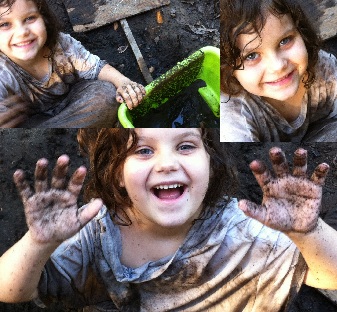

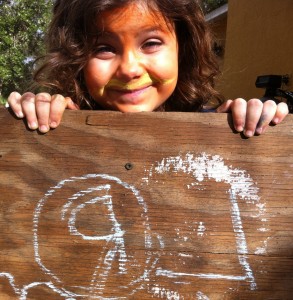
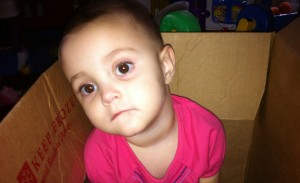

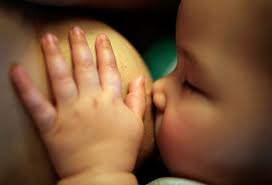





 Parenting – A Much Better Way » SIDS, Cribs and Cosleeping » Print
Parenting – A Much Better Way » SIDS, Cribs and Cosleeping » Print
 Breastfeeding Answers Made Simple – Breastfeeding Reporter – Unintended Consequences
Breastfeeding Answers Made Simple – Breastfeeding Reporter – Unintended Consequences
 My Date With Dr. Ferber
My Date With Dr. Ferber How They Do It In… Japan
How They Do It In… Japan












